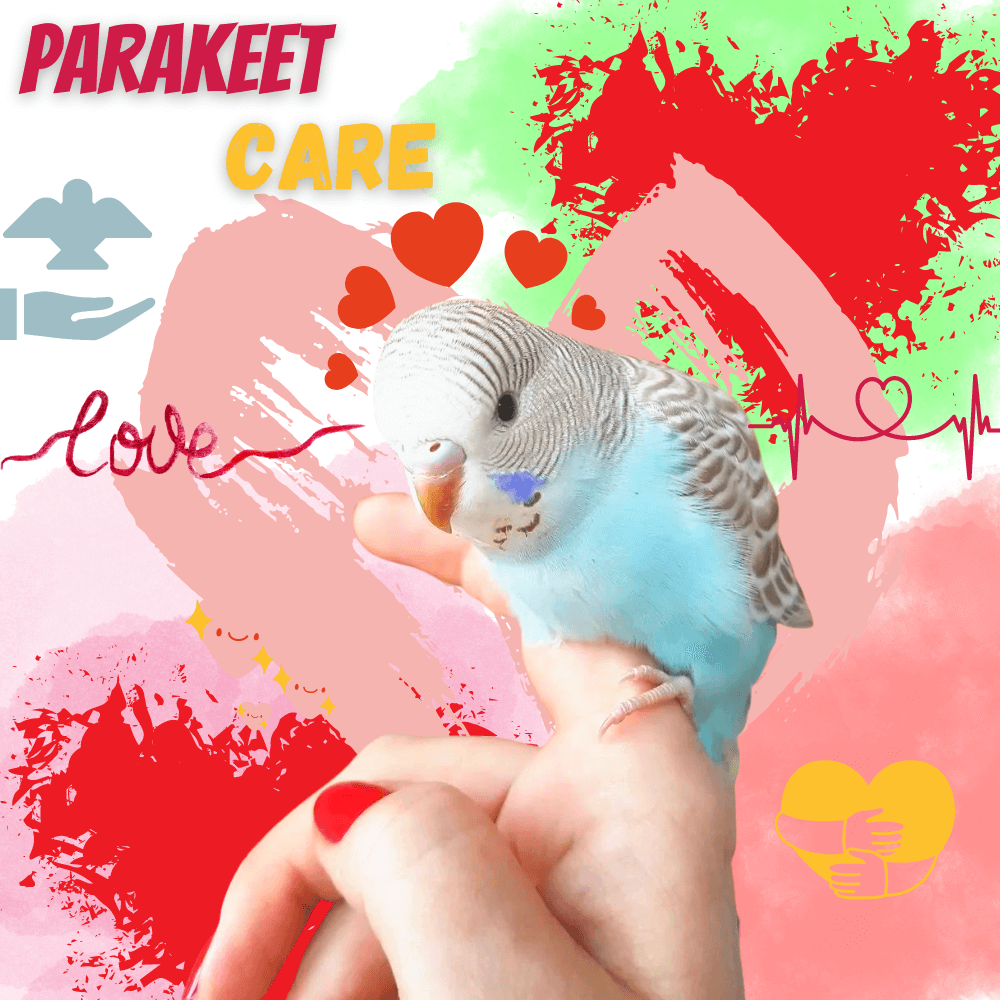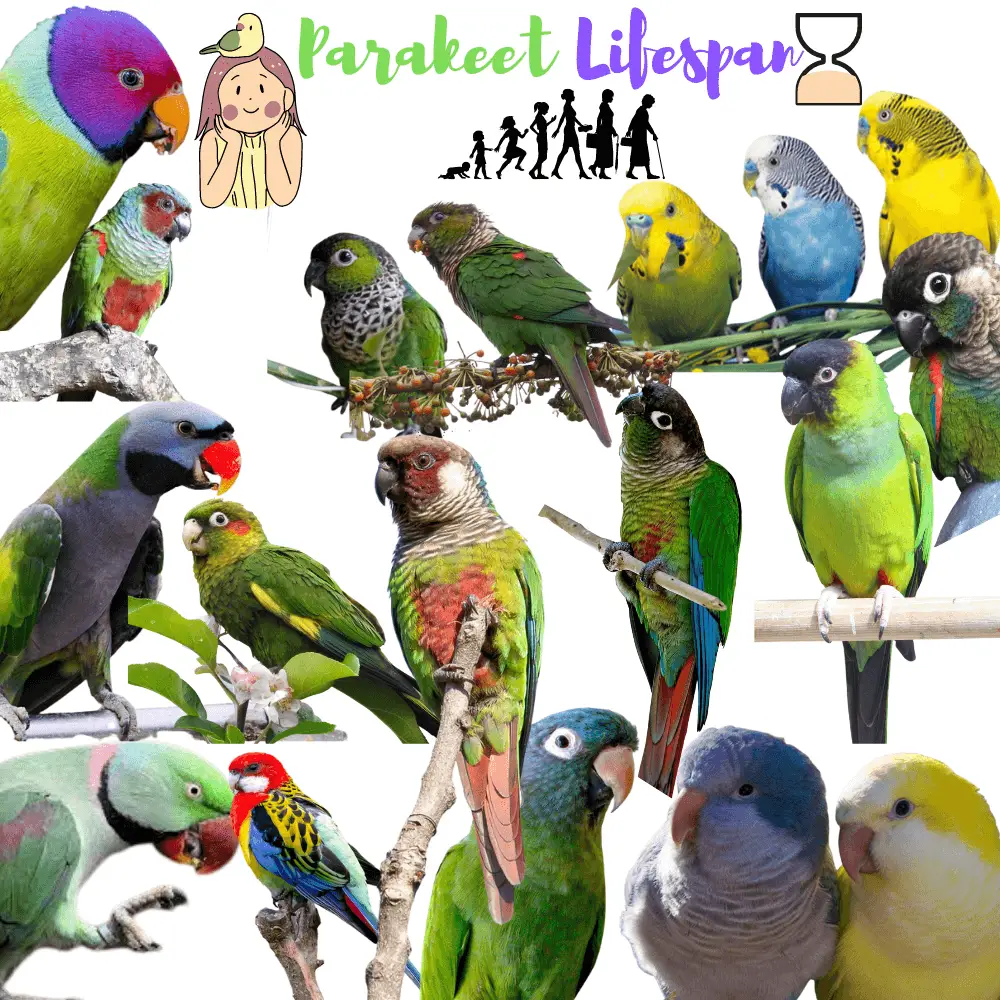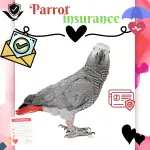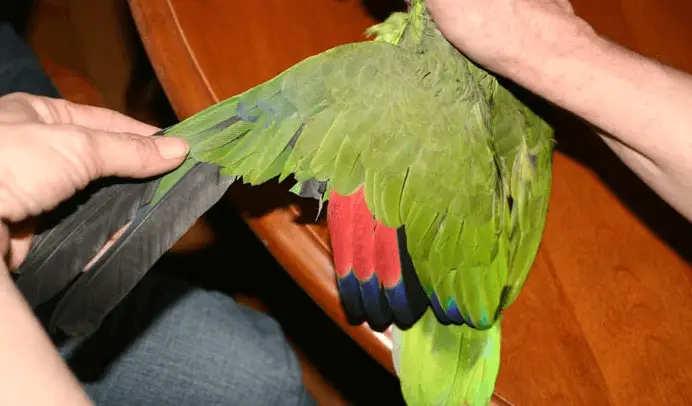
Parakeet care: The common parakeet or Australian parakeet is known around the world as a pet and the world’s most popular cage parrot.
They are as intelligent as some large parrots and can be tamed without problems. They are able to learn to perch on your hand, play with certain elements, repeat words, and imitate actions. They love company and joy.
If you have decided to adopt this fantastic bird, do not hesitate to read about the care of the parakeet.
How to take care of a parakeet
Parakeets are colorful little birds. Despite its small size, the parakeet is a member of the parrot family. It is an excellent companion for any first-time owner who would like to adopt a bird. They are easy to tame and are probably the easiest pet parrots to take care of.
If you own a parakeet or are considering adopting one, this article will answer some of the questions you may have. I will also familiarize you with some basics that a parakeet owner should know.
These birds are native to Australia and in the wild, they live in colonies. This is the reason why it is a good idea to keep them in pairs or small groups when in captivity. If you don’t want to end up with your own colony, be sure to leave only females or only males together!
To tell males from females, look at their core, just above their beak. A male will most likely have a royal blue cere and the females will be white, pale blue, or pink.
Parakeet nails
Some people are tempted to use perches covered in sand in an attempt to help control nail growth, but these can be harmful to the skin. A budgie on a decent diet shouldn’t need to have its nails done too often.
If the nails become too long, they should be trimmed regularly, to prevent them from becoming curved and awkward. Toenails left to grow too long can damage the feet.
At first, I recommend getting help to hold your bird while you trim its nails. It will be much easier for you, as it is a delicate operation due to the size of the toes.
Carefully hold the parakeet in a clean cloth and make sure that its wings are placed at its sides (without tightening too much, the parakeet must be able to move its thorax to breathe). You have to cut the nails rather quickly: they can quickly get too hot.
Holding one toe at a time, use nail clippers to cut the nails one at a time. You will notice a vein growing inside the claw (you can usually see this in light-colored nails, as the nail is white and the vein is pink), be careful not to cut it. If your bird’s nails are dark, take extra care and trim them a little bit at a time.
Parakeet wings
To prune them or not to prune them… Both options have advantages and disadvantages. A parakeet that has its wings clipped will be able to glide, but not fly. Some will say that it is easier to tame a bird whose wings are clipped. Many people think it’s also much safer because the bird can’t really escape and fly out of the house.
As for parakeet, he’s even afraid to get out of his cage, and being held back is a tragedy for him, so I decided not to clip his wings. He has a big cage, big enough to be able to fly and I think this situation suits him.
Depending on your bird’s lifestyle and personality, you will be able to choose the best option for your parakeet.
Parakeet cage
SOURCE: African Grey Parrot Pet
One important thing I didn’t know until I learned in the field is that birds have very specific housing needs. They need perches of different sizes, with varying textures, so that their feet don’t always have the same pressure points. It also helps to control nail growth.
It is also good if there is a bathtub in your parakeet’s cage. They really like to play in the water. parakeet shunned him, but I found he likes to be sprayed, so instead of a bath, I give him regular showers.
You need to stimulate your bird and provide it with things to do during the day. If they lack stimulation, they can easily get bored and start plucking their feathers.
Parrots love to destroy objects. Provide your parakeet with bird-safe toys made of string, cardboard, or shredding paper. You can make your own bird toys inexpensively, using non-toxic materials. Make sure your bird doesn’t get into the bad habit of eating its toys, though.
Here’s one last tip about housing your bird. Find a corner to add a mineral block or a cuttlebone. Your parakeet will love chewing on this good source of calcium.
Parakeet food

The basic diet of the parakeet is based on millet and you will find ready-to-use mixtures on the market because it is a very common bird.
It is also important to add a cuttlebone or a piece of calcium, this is essential, and from experience, we recommend the former instead.
As additional food, you can offer them lettuce leaves which they love. Also, you can try giving them small pieces of fruit like pears, apples, and watermelons. Vegetables are also an option for parakeets who like spinach, peas, corn, and carrots.
Another item that you can offer your parakeets is alfalfa, loved by most birds, but you should limit the doses because it is very caloric.
Parakeet health
It is essential that the cage and the items in it are cleaned regularly. The accumulation of droppings and spoiled food in the cage can cause many illnesses.
Check the parakeet from time to time to make sure it has no insects on it (focus your attention on the wings), you can eliminate them with special insecticide available at pet stores, don’t worry No, it won’t hurt him.
Although they are very clean animals you have to be careful to prevent diseases, and there are small pools on the market for the birds to soak in, which they especially like in summer. If you can’t find one, you can put down a small, easy-to-reach plastic container and fill it with water. You can also use a spray bottle.
If you see any sign of illness, it’s important to go to the vet.
Parakeet lifespan

How long do parakeets live? This is a good question to ask yourself before you commit to adopting one. They are small, fragile creatures, but as members of the parrot family, they can live surprisingly long.
Wild parakeets have a lifespan of about 5 years. In captivity, they have access to better food, a safer environment, and veterinary care. They have no predators (unless you have a cat at home…). All of these factors, along with others, such as genetics and exercise, can dramatically increase their lifespan.
Expect an average lifespan of 6 to 12 years, when the parakeets are kept in captivity. However, with excellent care, parakeets can live up to 20 years!
Parakeet sounds
Adding a parakeet to your family will undoubtedly enhance your daily life. They will greet you with very beautiful songs and can produce sounds that you never imagined they could produce.
If your parakeet seems to be screaming, he’s probably expressing fear, discomfort, or a bad mood.
For example, the parakeet will scream if you try to interact with him after 8 p.m. Obviously, after this hour, he prefers to be quiet and alone. He will also scream if his food bowl is empty during the day.
the hyacinth macaw I worked with, squealed when no one was watching (and believe me, he made the loudest sound you’ve ever heard). He liked to be the center of attention.
Budgies and parrots in general have very bubbly personalities and you will learn over time what various sounds mean in your own bird.
parakeet is definitely not one of those special parakeets that can talk! If you want to have a better chance of getting your budgie talking, start repeating simple words like “Hello” from an early age, several times a day, and give it time.
One of the things I’ve noticed about my parakeet is the way he squeaks his beak. I noticed the same behavior in a hyacinth macaw I worked with at the Aquarium Du Québec. They make this very particular sound to express their contentment, similar to how a cat purrs.
What parakeets can eat?
We could talk about dieting for a very long time. A balanced diet is the greatest gift you can give your parakeet. Don’t just give it seeds!
I know it’s tempting, and they love them, but seeds should only make up about 50% of their meals. The remaining 50% should be pellets. A bird that does not eat pellets is at risk of vitamin and mineral deficiencies.
It is also important to include fruits and vegetables in your bird’s daily diet. Personally, I think these are the best treats! You will have to try different foods to find out what your bird likes the most. After trying lots of things, I discovered that parakeet loves spinach!





















